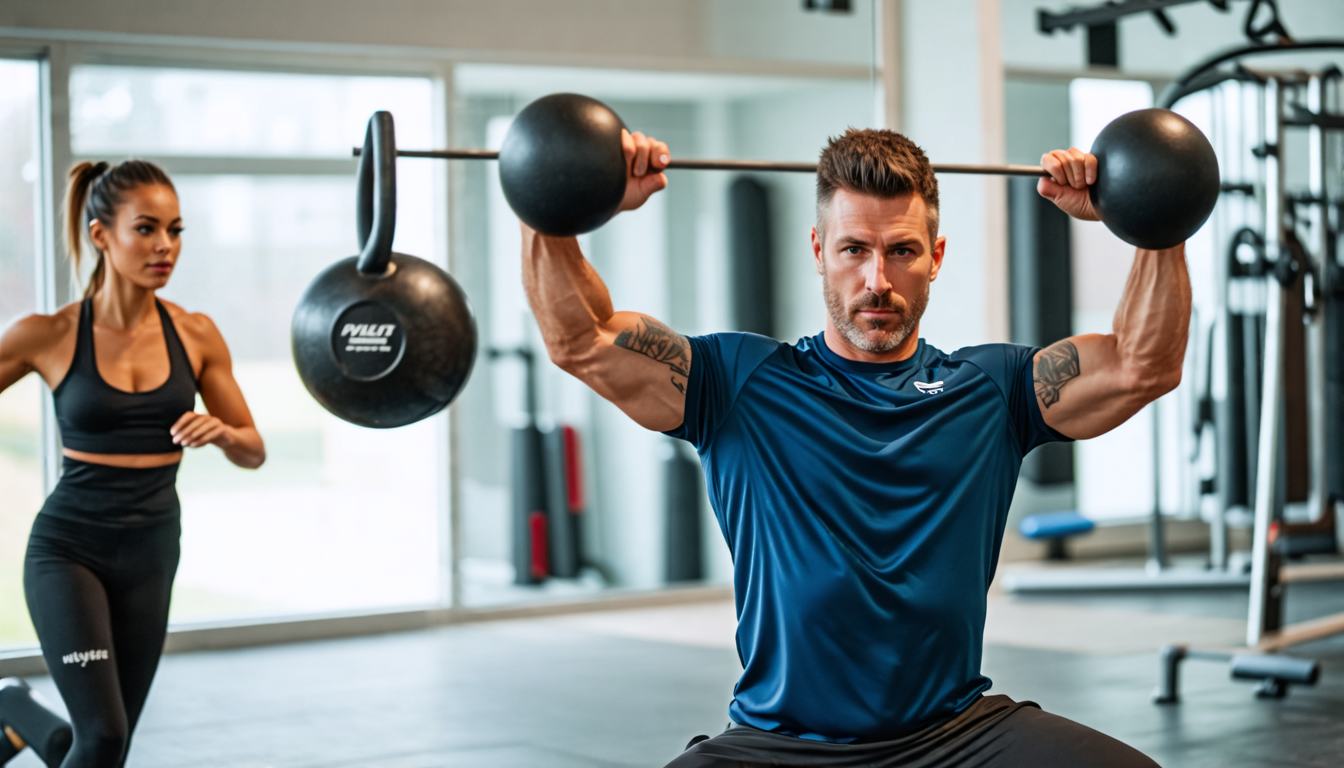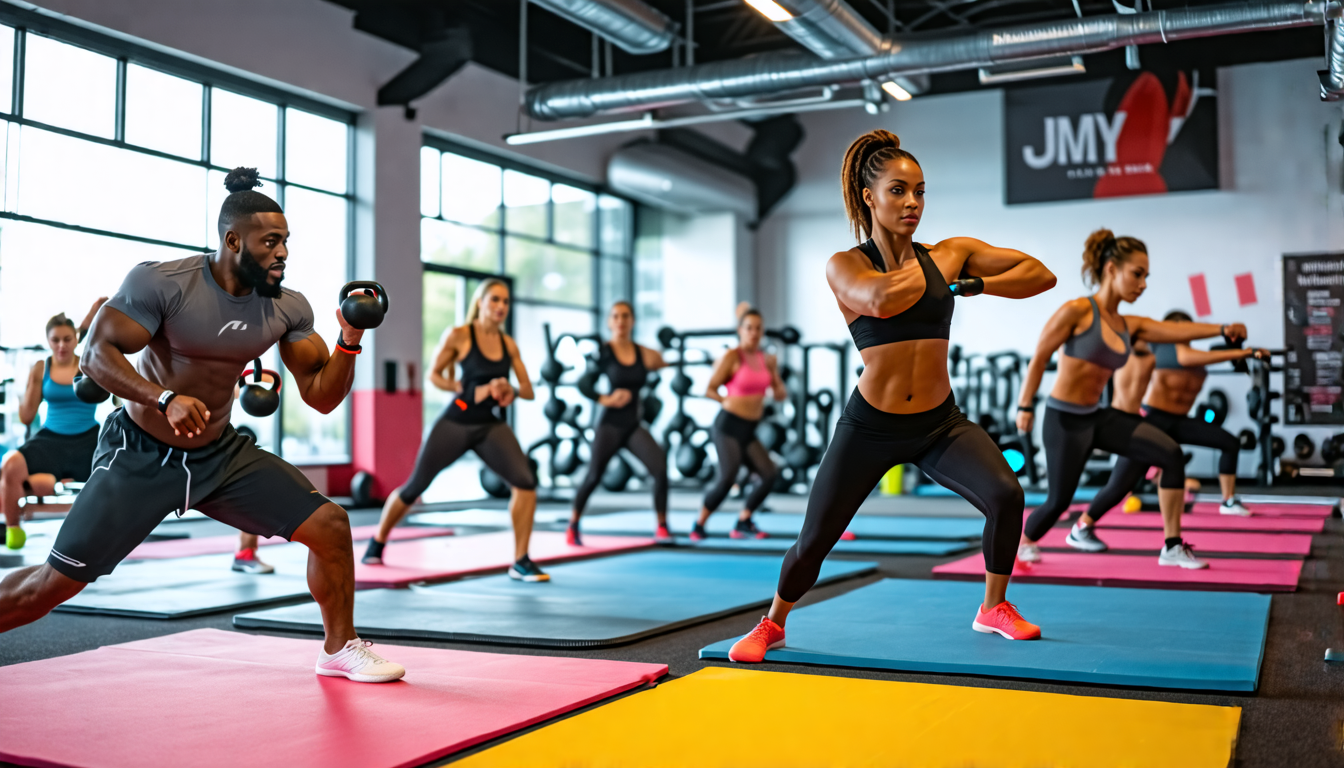When it comes to creating a dynamic and effective workout routine, the combination of kettlebells and fitness bars is a powerhouse duo. This blend not only elevates the intensity of your workouts but also enhances strength, flexibility, and endurance across your entire body. Unique in their attributes, kettlebells and fitness bars complement each other by targeting various muscle groups through a range of compound movements. By integrating these pieces of equipment, you can elevate simple exercises like squats, lunges, and deadlifts into more challenging and rewarding routines. It is essential to focus on proper form to optimize your gains and minimize the risk of injury. This synergy allows fitness enthusiasts to push their boundaries and achieve a more comprehensive workout, blending the fluidity of kettlebell swings with the stability provided by fitness bars. As you explore the fusion of kettlebell workouts with fitness bar routines, you’ll discover the heightened potential for achieving your fitness goals efficiently and effectively.
Understanding the synergy between kettlebells and fitness bars can open up a world of possibilities in achieving an effective, full-body workout. Both pieces of equipment offer unique benefits that, when combined, deliver enhanced strength, flexibility, and endurance training. By exploring their complementary attributes, fitness enthusiasts can design comprehensive routines that target multiple muscle groups and boost overall athletic performance.
The kettlebell, known for its unique shape and versatile use, is excellent for developing power, building muscle mass, and elevating cardiovascular endurance. Its off-center weight distribution engages stabilizing muscles, challenging your balance and core strength with every movement. Common kettlebell exercises like swings, snatches, and Turkish get-ups provide full-body conditioning while enhancing explosive power.
On the other hand, the fitness bar, often used in resistance training, offers uniform weight distribution, making it ideal for exercises that focus on controlled strength building. Fitness bars add stability and structure, allowing for precise execution of exercises such as squats, presses, and deadlifts. The consistent weight alignment helps trainees focus on form and muscle engagement, crucial for developing sustainable strength and muscle memory.
When combined, kettlebells and fitness bars create an advanced workout environment that leverages the strengths of each tool. For instance, incorporating a fitness bar into kettlebell squats can increase the challenge by adding upper body stabilization, making the core work harder to maintain balance. Similarly, performing lunges with a fitness bar enhances concentration on body alignment and posture, while the kettlebell increases the dynamic aspect of the exercise, testing your coordination and balance.
Deadlifts become significantly intensified by using both tools. A fitness bar can introduce a heavier lifting element, while kettlebells emphasize unilateral movements and grip strength, targeting different muscle factions that contribute to overall lifting capacity.
For all exercises, maintaining proper form is critical to maximizing gains and preventing injuries. When using a fitness bar with kettlebells, focus on athletic posture—keep a straight back, engage the core, and keep knees aligned with toes during lower body movements. This ensures that the added challenge does not compromise form.
Additionally, warming up properly is imperative. A dynamic warm-up that includes light cardio and mobility exercises prepares your muscles and joints for the workout ahead, enhancing performance and reducing the risk of injury.
Integrating kettlebells and fitness bars into your routine offers the dual benefit of versatility and intensity. The combined use underscores the necessity of transitioning smoothly between types of equipment, fostering muscle confusion and dynamic stability, which are pivotal for optimal physical development.
Overall, combining kettlebells with fitness bars not only elevates conventional workout routines through diversified exercises but also ingrains a more attentive approach to exercise form and consistency. This integration supports a holistic training approach, enabling progress in strength, flexibility, and endurance while also keeping workouts engaging and challenging.

To maximize results when combining kettlebell exercises with fitness bar workouts, it’s crucial to tailor your routine to suit your personal fitness needs and objectives. By carefully structuring your workout plan, you can harness the potential of both pieces of equipment to optimize strength, endurance, and flexibility gains.
Structuring Your Workout Plan
Creating an effective workout plan requires balancing both kettlebell and fitness bar exercises. Consider the following steps to ensure a well-rounded workout:
- Set Clear Goals: Identify whether your primary focus is building strength, increasing endurance, boosting flexibility, or losing weight. Your goals will inform your choice of exercises, weights, and overall workout structure.
- Assess Fitness Level: Evaluate your current fitness level to select appropriate weights for both kettlebells and fitness bars. Start with lighter weights if you’re a beginner and gradually increase as your strength and confidence grow.
- Plan Your Routine: Design a routine that integrates both equipment. Break down your workout into sections focusing on different muscle groups or fitness elements, such as strength training and cardio. Ensure there’s enough variety to maintain interest and target multiple areas.
Selecting the Right Equipment
Choosing the correct kettlebell and fitness bar weight is crucial for achieving optimal results without risking injury.
- Kettlebells: For beginners, starting with a 10-15 pound kettlebell is advisable. Intermediate and advanced users can progress to heavier weights ranging from 20 to 50 pounds based on their capability and exercise type.
- Fitness Bars: Consider the bar’s weight in your training. Lightweight bars may weigh around 5-15 pounds, suitable for beginners, while standard bars used for serious strength training can weigh from 30 to up to 50 pounds or more as you progress.
Sample Workout Regimen
A balanced workout should incorporate exercises targeting major muscle groups, core stability, and cardiovascular fitness. Here’s a sample workout plan to get you started:
Warm-up (5-10 minutes):
- Jumping Jacks – 2 minutes
- Bodyweight Squats – 15 reps
- Arm Circles – 1 minute forward, 1 minute backward
Main Workout (45 minutes):
- Compound Movements:
- Kettlebell Swings – 3 sets of 12 reps
- Kettlebell and Fitness Bar Squats – 3 sets of 10 reps
- Bent-over Rows with Fitness Bar – 3 sets of 12 reps
- Core Strengthening:
- Russian Twists with Kettlebell – 3 sets of 15 reps per side
- Plank with Fitness Bar Rollouts – Hold for 30 seconds, 3-5 reps
- Cardio Elements:
- Kettlebell Snatches – 2 minutes on each arm
- High-Knee Sprints on the Spot – 1 minute
Cool Down (5-10 minutes):
- Stretching Exercises:
- Hamstring Stretch
- Shoulder and Arm Stretches
- Deep Breathing
Expert Tips for Recovery and Nutrition
To support your workout gains and overall health, follow these expert recommendations for recovery and nutrition:
- Recovery: Ensure adequate rest between workout sessions, prioritizing quality sleep and regular muscle massages or foam rolling to alleviate soreness and enhance flexibility.
- Nutrition: Maintain a balanced diet rich in proteins, healthy fats, and complex carbohydrates to fuel your workouts. Hydrate regularly, and consider post-workout snacks like a protein shake or a banana with almond butter to replenish energy and assist muscle recovery.
By methodically planning your workout routine and making informed equipment choices, you can effectively leverage the synergy of kettlebells and fitness bars to reach your fitness goals. Implement these strategies to enjoy a comprehensive and rewarding fitness journey.
In conclusion, combining kettlebell exercises with fitness bars offers a powerful and dynamic approach to achieving a well-rounded fitness routine. This synergy between the two pieces of equipment allows individuals to target multiple muscle groups, improve balance, and enhance overall strength and flexibility. By integrating exercises like squats, lunges, and deadlifts with both kettlebells and fitness bars, workouts become more robust and challenging, paving the way for significant fitness improvements when performed with proper form.
Moreover, tailoring your workout plan to balance kettlebell and fitness bar routines ensures that you harness the full potential of this combination. Selecting appropriate weights and setting achievable goals based on personal fitness levels provides a structured path to maximizing results. A well-designed workout regimen that blends compound movements, core strengthening, and cardio elements helps in crafting an effective and engaging exercise experience.
Finally, it is crucial to complement your physical efforts with proper recovery and nutrition. Allowing your body adequate time to heal and fueling it with the right nutrients not only supports your fitness journey but also promotes overall health and well-being. By embracing this comprehensive approach, you can unlock new levels of fitness and enjoy the many benefits that kettlebell exercises combined with fitness bars have to offer.

